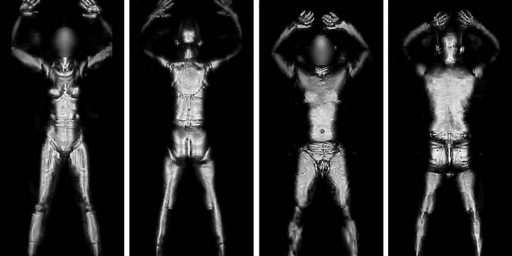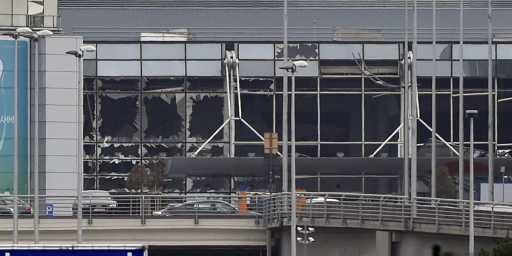America’s Outdated Infrastructure
Thomas Friedman laments that said state of America’s transportation infrastructure.
A few weeks ago, my wife and I flew from New York’s Kennedy Airport to Singapore. In J.F.K.’s waiting lounge we could barely find a place to sit. Eighteen hours later, we landed at Singapore’s ultramodern airport, with free Internet portals and children’s play zones throughout. We felt, as we have before, like we had just flown from the Flintstones to the Jetsons. If all Americans could compare Berlin’s luxurious central train station today with the grimy, decrepit Penn Station in New York City, they would swear we were the ones who lost World War II.
How could this be? We are a great power. How could we be borrowing money from Singapore? Maybe it’s because Singapore is investing billions of dollars, from its own savings, into infrastructure and scientific research to attract the world’s best talent — including Americans.
Perhaps a more plausible explanation is that Singapore Changi Airport just opened in 1981 whereas JFK has been open since 1948? Or that the former is the shining spotlight of a wealthy city-state whereas the latter is one of three major airports in the New York metropolitan area and one of dozens in relatively close proximity?
Similarly, the Berlin Hauptbahnhof is brand, spanking new, having opened in 2006. Penn Station opened in 1910.
That Singapore and Berlin have newer and more impressive transportation hubs than New York City is almost assuredly not related to savings rates. If we were to build new airports or train stations, we’d certainly not do so with cash on the barrel head; we’d issue bonds.
The problem is that it’s almost impossible to get approval to undertake such massive projects. We’ve got an incredibly decentralized system that creates powerful inertia for the status quo. Local interests would rebel against putting a new airport anywhere near them because of the externalities involved. State, local, and federal authorities would vie with themselves and dozens of private stakeholders as to what share each would assume of the costs. State and federal regulators would put up all manner of obstacles to the project.
What we wind up doing in most cases is piecemeal renovation and expansion of existing facilities. Which, incidentally, has been happening at JFK in phases throughout its existence and, most notably, since 1998. But that approach guarantees that it’ll never be the architectural marvel of a brand new facility built without these constraints.
UPDATE: I should have completed the circle by noting, as Dave Schuler has, that Singapore decidedly lacks those constraints.
Indirect hat tip to John Cole, who focused on an entirely different aspect of Friedman’s column.





Yeah, it’s funny that Tom Friedman didn’t seem to think of that as I commented yesterday:
Heh. Great minds and all that.
Geography and current use also pose significant problems. You’d need to find a good bit of empty space near NYC to build a new airport that could handle the traffic. Easier said then done. Renovating the current facilities is also tough because, well, you can’t shut down JFK for 2 years or however long it would take to do a comprehensive rebuild.
That’s not to say that it can’t be done at all, it’s just a little tougher. And, it’s not going to be done all at once.
Brand new stuff generally looks better and works better then old stuff. This simple observation is often ignored in infrastructure discussions.
I first heard that argument around 1960. The claim then was that Germany and Japan had been rebuilt after WWII with gleaming, ultra-modern, high technology infrastructures that made the shabby, antiquated and thoroughly unproductive American cities relics of the past. The spin was that they were the real victors in the war and that America would soon fall back to a second class national status. Besides the whole world knew us as “Ugly Americans” and “Yanqui Go Home” graffiti were scrawled on the walls from Bolivia to Bangkok. The more things change, the more they stay the same.
Uh, James, the current Penn Station (under Madison Square Garden) complex was completely redone in 1964. Only the underground tracks are from the original era.
Another point- How many air travelers are concerned with anything more than basic upkeep of an airport, alone any amenities it offers? An airport is just a tool in getting from point A to C, with the connection in B.
I flew over 400,000 flight miles from 1996 to 2002. Mostly out of West Palm Beach, but sometimes Ft. Lauderdale and Miami. The airports I most frequently visited outside of Florida were Detroit and Houston(for connections) and Los Angeles(my most usual destination). Outside of the six airports I mention above, and maybe Amsterdam and Tokyo where I made frequent connections, I didn’t pay much attention to what an airport offered and didn’t offer. Yes and I even flew to Singapore with the wife in 1998. The airport is sparkling, but what I best remember was Singapore Airlines putting our bags off first. Dear Wife and I were flying first class from Manila. Even as a Platinum FF, priority baggage tags usually meant nothing when I flew. Only once was I ever separated from my luggage too.
Friedman didn’t look at either the big or small picture when he compared JFK to Singapore. BTW, wouldn’t you think Friedman would be a FF or if not, be willing to put up for an airline club pass for just one day if he was so concerned about lack of seating. In my FF days, I had a NW airport lounge membership.(There’s another name for it, but 7 years have passed almost and I got cancer in my brain. My mind is forgetting things I used to recall in seconds only a few years ago).
Bill
Funny, I’m getting a brand new terminal at my local airport. So much for not investing in infrastructure.
Friedman also needs to take into account the wear and tear on these older airports. They may look rough but still accomplish what they are meant to do.
Many times it’s about priorities. I don’t care a lot about a place I’ll spend a couple of hours in waiting for a flight. I might be more inclined to spend limited resources on a new school or highway. I guess jet setters like Friedman have a different priorities.
Try to see the forest for the trees. Our infrastructure is in sorry shape. We are just now going to HDTV. Wireless is better in Asia. Broadband internet is better in many places. The power grid is vulnerable and powered by dirty fuels. We are just now grappling with climate change in a real way — now that gas is $4/gallon.
It’s an inherent problem with market economics and market politics — decisions are made with short term trade-offs overweighted in the analysis.
Friedman’s vignette about the airports doesn’t work, but that’s not the point. The point is that we don’t invest as much in public goods and that public goods are part of a country’s standard of living that doesn’t show up in household income stats.
The conservative movement brought a healthy skepticism to government policy being a solution for all problems. Unfortunately, it also brought ideological antipathy to the entire public sector, resulting in poor management of public bureaucracies (e.g the entire Bush administration) and a series of policy choices that effectively privatize the profits but socialize the costs. If conservatives don’t address their conceptual overreach they will get clobbered in the coming decades. It wasn’t just Bush. Good outcomes require different approaches, at least some of which will be complex public programs and some of which will require new government spending.
Changi airport handled 36.7 million passengers in 2007. JFK handled 47.7 million passengers in 2007. The three airpros in the metro New York area (Including JFK) handled 109 million passengers in 2007.
There are a number of reasons for aging infrastructure not being updated. One, often forgotten, reason is the US division of assets. The government does not own all the infrastructure, and government owned infrastructure is split between the three layers, Federal, State and local.